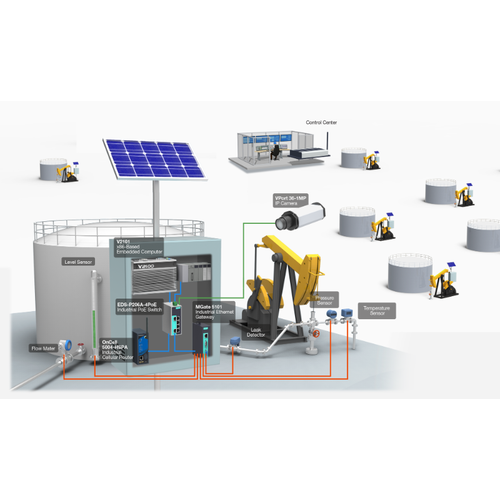
Published on 07/29/2016 | Strategy
What does Industrial IoT actually mean for you today? From my perspective, I see this phenomenon as providing real solutions that solve business challenges within energy automation and intelligent traffic systems. Here are a few examples of how companies like Moxa are making Industrial IoT a reality with unique technology and a practical implementation approach.
The highly volatile price of oil has enormous implications for profitability, a fact that has become painfully apparent for oil and gas conglomerates across the globe. With this said, the cyclical trends of the market are no cause for a halt in network modernization, but rather a justification for it. Imagine if extraction and production could be easily automated in coordination with global supply and price? What if operational risks could be mitigated by production decisions made in real-time at the field-level? What if you knew how to extend the operational life of $400 million dollars worth of capital equipment in the field for an additional 4 years? With intelligent sensors and intelligent edge devices, oil and gas customers are finding that they don’t have to imagine a future like this any longer.
Sensors have become much more intelligent and capable, especially within process automation sectors. With this technology comes an increase of data. Being able to read and act on the data generated at the field-level of an oil and gas platform, is something that is not yet commonplace. Oil and gas extraction points in extremely remote or inhospitable locations onshore or out at sea, are often limited by the bandwidth available to them. Satellite communication is the primary mode of data delivery from the field to the off-site control room. The data provided by modernized sensor technology can generate up to two terabytes of data per oil platform daily, taking up to 12 days to process from the moment of being pushed out.
Edge computing solves this data bottleneck problem by bringing the analysis component of operations to the location where it’s all happening. Oil production can be altered in response to high-powered analytics in real-time. Reads on pressure, temperature and flow can shed valuable insight to the state of capital equipment and prevent operational failures. A higher degree of integration with HPCs (High Power Computer) enables the central control to pull data from the fleet network in the field with great veracity. Reduced infrastructure costs obtained by circumventing PLCs in the field offer a huge benefit to the bottom-line as well.
Embedded computing is bringing automated decision making capability to remote oil and gas locations across the upstream and midstream arena. In Industrial IoT, data equals power, but only if you can act on it. Now, the world’s most remote oil and gas operations have the ability to take data-driven decision making from days to milliseconds.

Have you ever wondered what infrastructure would be needed to support a highway of smart cars? Moxa’s high bandwidth switches, industrial wireless units and gateway technology offerings is helping cities, from Taipei to New York, modernize their city with ITS-capable infrastructure for a future of connected cars and traffic systems.
Many high profile technology companies are investing heavily in highly autonomous vehicles for a telematics world; in other words – smart cars. However, in order to make this future of connected cars a reality, traffic networking technology needs to support this growth of data on the highway with a scalable infrastructure. Traffic management systems in city municipalities and in the cloud must be able to collect and control information regarding vehicle braking, merging, and acceleration, as well as the location of each and every car on the road. The symbiotic relationship between a connected car and the road will ensure a connected city infrastructure as well.
The challenges of enabling this exciting application of Industrial IoT in our world’s flagship cities are many, but two of the key key requirements for success are network scalability and availability. In modernizing the traffic management and surveillances systems around Silicon Valley and the Atlantic coastal cities of the USA, it has been a key design principle to keep the inevitable advancement of technology in mind.